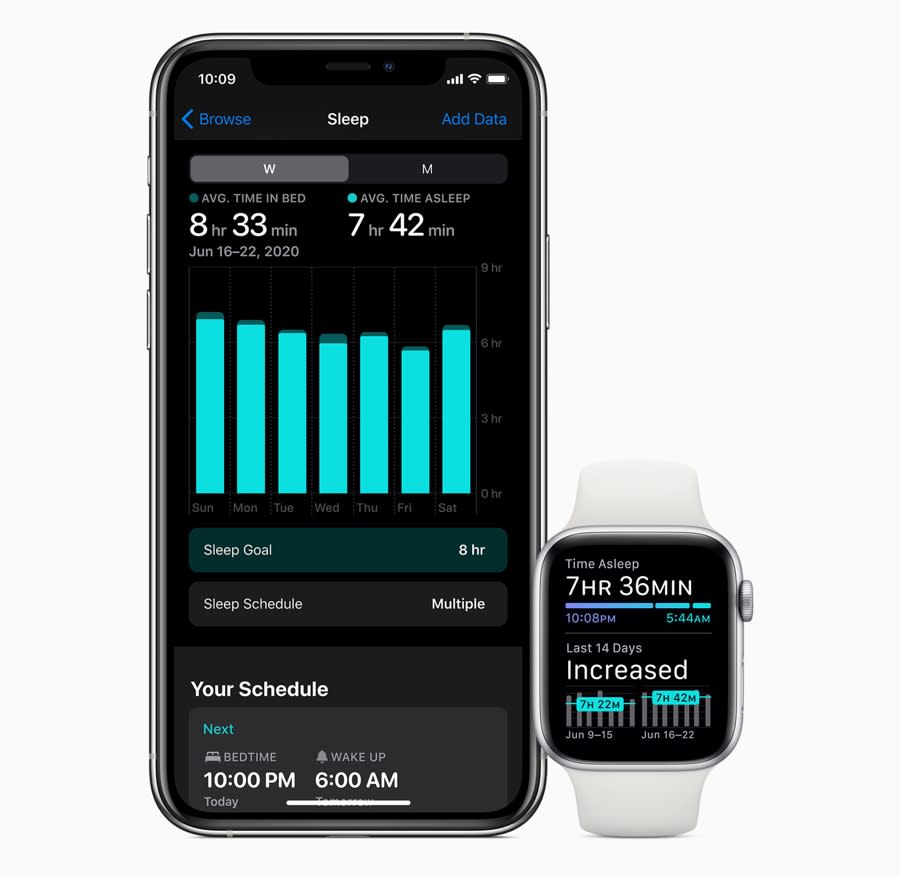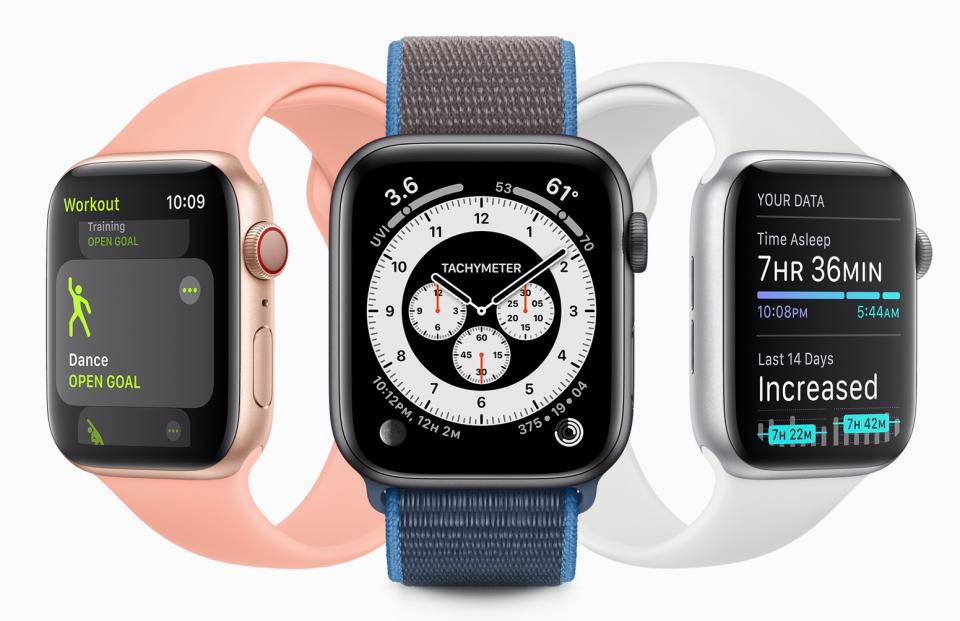The Apple Watch is now easily the best smartwatch in the world
The Apple Watch is the most popular smartwatch in the world. According to data from Statista, Apple claimed a staggering 55% of the market as of Q1 2020. It's no wonder the Apple Watch is so popular, either. It's fashionable, includes a ton of fitness tracking capabilities, and onboard apps for everything from contactless payments to Uber, and more.
But there was one key component that Apple Watch fans have been clamoring for years: sleep tracking. That all changed on Monday when Apple, at long last, announced that it is adding sleep tracking to the Apple Watch in watchOS 7, the latest version of the operating system that powers Apple's wearable.
With that one addition, Apple transformed its watch from a capable and popular wearable into the undisputed king of smartwatches. But not everyone will get access to the new feature.
Sleep tracking, the missing piece
The Apple Watch's lack of sleep tracking, and its roughly two-day battery life, have been the biggest criticisms against the wearable. But with the addition of sleep tracking, Apple has squashed half of that criticism. Here's how sleep tracking works.
First off, it's not something that automatically kicks on. You'll actually need to set a bedtime to let the watch know that you're going to be hitting the sack soon.
According to Apple, that doesn't mean you have to go to bed at that exact time each night, instead it gives the watch a heads up to look for signals that indicate you're going to sleep soon.

Adding a bedtime will also push notifications to your iPhone for apps you frequently use before going to sleep. That can include things like meditation apps or prompts to launch "scenes" in Apple's Home smart home app that let you lock your doors and turn off the lights in your house from your phone.
Once you do lie down for the night, your Apple Watch will use its built-in accelerometer to look for general motion and micromovements from your breathing to determine when you actually go to sleep.
When you wake up in the morning, you'll see a summary of your night's sleep, complete with how many hours you slept and how much battery life the watch has left.
New exercises and reminders to…wash your hands?
In addition to the sleep tracking feature, Apple also announced a number of new exercises available for the Apple Watch's Workout app. The additions include a Dance workout (for people far more coordinated than me); a new Core Training workout (for folks with more patience than me); a Functional Strength Training workout; and a Cooldown workout.
In a rather surprising move, Apple has also added a new hand-washing timer to the Apple Watch. There are already plenty of apps out there that help remind you to spend 20 seconds washing your hands to ensure you rinse away germs and bacteria, especially in light of the coronavirus pandemic, but it's still an unexpected addition to the watch.
The feature works by automatically recognizing the sound of running water and the motion of your watch as you wash your hands. It then kicks on a 20-second timer to ensure your mitts are as clean as possible.

In addition to new exercises and hand-washing detection, Apple is expanding the Watch's Noise app. The feature, which alerts you to sounds that are above safe levels in order for you to prevent hearing damage, will now be able to determine if the music you're listening to in your headphones is loud enough to harm your hearing, as well.
Then, of course, there's the ability to further customize Apple Watch faces with multiple complications from a single app, options for getting faces from the App Store, and a way to share faces with your friends.
The one issue now facing the Apple Watch is its two-day battery life. It's hard to imagine Apple will be able to add several more days worth of battery life to the watch without significantly increasing its size to accommodate a larger battery, but it's still a valid criticism nonetheless. Especially when watches from Fitbit, though not as capable, are able to run for several days at a time on a single charge.
Who gets these new features?
The first-generation Apple Watch is five years old, so it, and the second-generation watch, won't get access to watchOS 7. It's a pain to be sure, but as Apple tells it, the older wearables simply can't handle the features offered in the latest software update.
The Apple Watch Series 3 is eligible for watchOS 7, but it won't be able to use the hand-washing detection function. Both the Apple Watch Series 4 and Apple Watch Series 5 will be able to take full advantage of all of the new capabilities offered in watchOS 7.
I was an advocate of the Apple Watch Series 3 for some time, largely because Apple has been selling it for just $199, making it a great entry point for consumers interested in trying out a smartwatch. But with the news that it won't support hand-washing detection, it's clear that the Series 3 isn't long for this world.
The Apple Watch Series 5, however, is currently on sale at Amazon for $299, down from $399, making it a pricier, though more functional, option for shoppers who want a smartwatch of their own.
For my money, I'd wait to buy an Apple Watch until September or October, when Apple is likely to unveil its Apple Watch Series 6. That's because the Series 6 will likely have a more advanced processor and could offer longer battery life than the Series 5. Apple may even lower the price of the Series 5 at that point, as well.
So if you don't have an Apple Watch at the moment, hold out for another couple of months before taking the dive. It'll be worth it.
Got a tip? Email Daniel Howley at dhowley@yahoofinance.com over via encrypted mail at danielphowley@protonmail.com, and follow him on Twitter at @DanielHowley.
More from Dan:
Apple to close retail stores in 4 states amid coronavirus outbreaks
Why Microsoft and Amazon are calling on Congress to regulate facial recognition technology
The PlayStation 5’s most important feature will be its price
Follow Yahoo Finance on Twitter, Facebook, Instagram, Flipboard, SmartNews, LinkedIn, YouTube, and reddit



